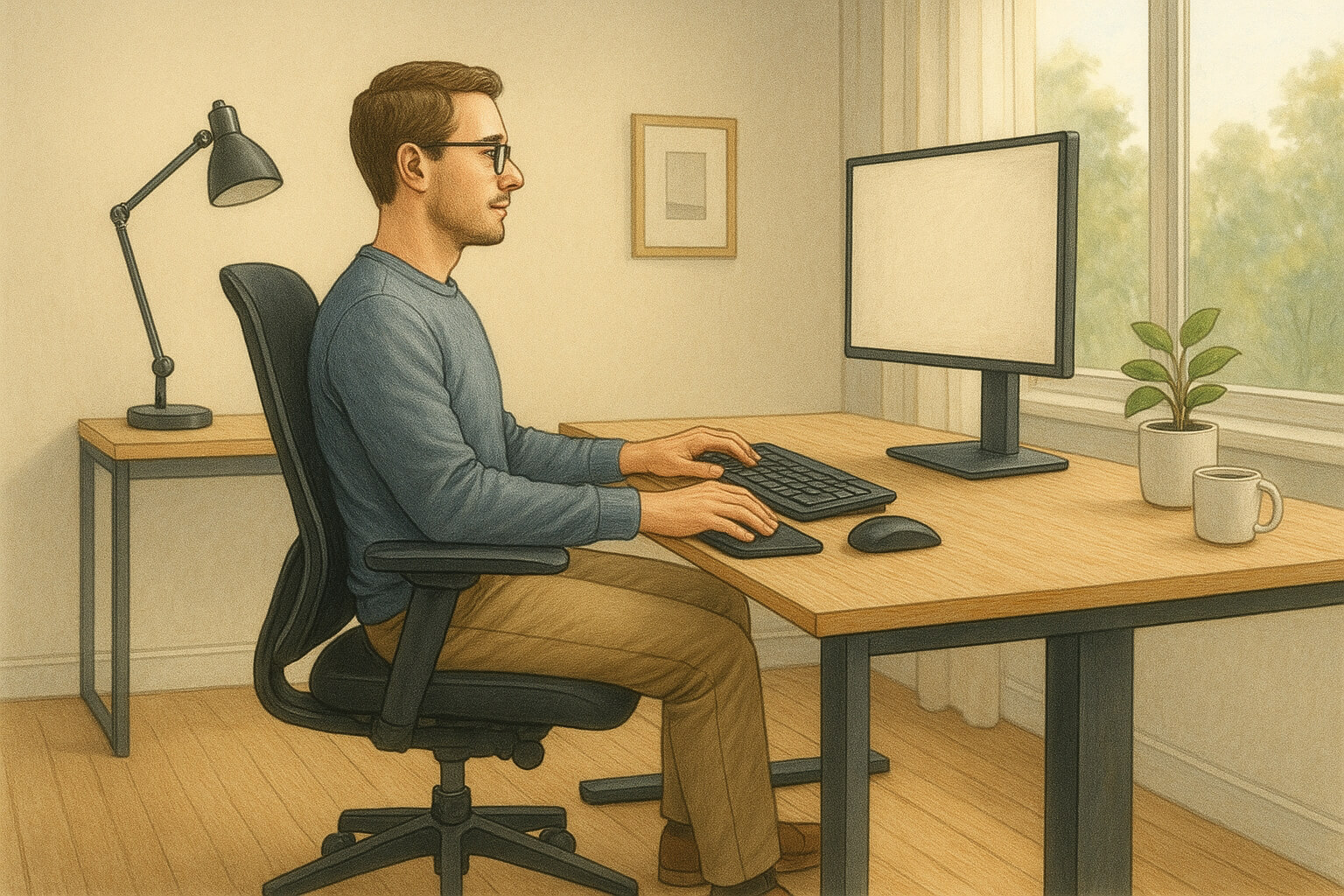September 10, 2025

In our always-on, tech-driven world, we spend more time than ever sitting at desks, working on computers, or scrolling through devices. Unfortunately, this screen-heavy, sedentary lifestyle has created a new epidemic—chronic discomfort and pain caused by poor ergonomics.
Whether you're in a corporate office or working from a makeshift home setup, ignoring ergonomics can lead to serious long-term health issues. But the good news is: with a few mindful changes to your environment and daily habits, you can prevent pain, improve focus, and support your overall well-being.
If you're interested in how environment and lifestyle impact health on a deeper level, explore The Power of Community in Health Recovery, which highlights how support systems and surroundings influence healing and resilience.
Ergonomics is the science of designing your environment to fit the way your body naturally functions. Instead of forcing your body to adapt to uncomfortable setups, ergonomics encourages the opposite—adapting your tools and spaces to your body's needs.
When ergonomics are neglected, the strain adds up. Slouching for hours, bending your neck to view a screen, or typing with bent wrists may not seem harmful in the short term, but these positions put consistent pressure on your spine, joints, muscles, and nerves.
This can lead to:
Poor ergonomics can even trigger more serious conditions like carpal tunnel syndrome or herniated discs over time.
In contrast, a well-designed workspace helps reduce strain, encourages better posture, and promotes both comfort and focus. If you’re already looking for ways to improve your day-to-day energy and well-being, Healthy Habits That Improve Well-Being is a great complementary read.
Many offices still provide generic desks and chairs without much thought to individual comfort. But every person is different—height, posture, work style—all affect how a space should be designed.
Here’s how to build a healthier, more ergonomic setup in a professional workspace:
Workplaces that actively invest in ergonomic design and employee wellness often see improvements in morale, productivity, and retention. To learn more about workplace wellness initiatives, check out The Role of Non-Profits in Community Health.
Remote work and hybrid setups have blurred the lines between work and home. Unfortunately, many people still work from couches, kitchen tables, or even beds—all of which are rarely designed for proper posture.
But even if you don’t have a dedicated home office, you can still build a more ergonomic space.
For more practical tips to enhance your remote work experience, read Ergonomics and Remote Work: Adapting for Comfort.
Ergonomics isn’t just about chairs and desks—it’s about how you use your body throughout the day. You can have the best setup in the world, but if you slouch, never take breaks, or ignore discomfort, you’ll still run into problems.
Here are a few daily habits that reinforce ergonomic health:
Want to build better work-life flow? Work-Life Balance Tips for Busy Professionals offers great insights for balancing wellness with work demands.
Ergonomics isn't a one-time setup—it’s a mindset. It’s about creating environments that respect your body, support your focus, and prevent long-term injury. Whether you work from a downtown office or a corner of your living room, the choices you make each day affect your comfort, health, and energy.
By taking small, consistent steps—adjusting your posture, upgrading your workspace, building in movement—you can protect yourself from chronic pain and support a healthier, more sustainable lifestyle.
Ergonomics is just one piece of the larger wellness puzzle. For more strategies, inspiration, and expert insights, explore these in-depth articles:
Would you like this formatted for a specific platform—like WordPress, Medium, or email newsletters? I can also help you turn it into a downloadable PDF or lead magnet if needed.
Stay up to date with the latest tips, expert insights, product reviews, and step-by-step guides to help you grow, create, and succeed—no matter your industry or passion.